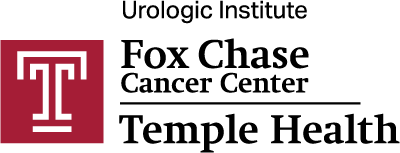
Paul B. was 69 years old when he sought out care in 2017 for worsening shortness of breath that was limiting his daily activities. His issues began in 2006 when a car accident led to a collapsed lung, rib fractures and a splenectomy. In 2007, he was treated for a pulmonary embolism with warfarin al his local hospital.
By 2015, Paul began having trouble breathing. A CT scan revealed pulmonary emboli and a right heart catheterization showed pulmonary hypertension. He was started on PH medications, but one year later an echocardiogram showed progressive RV enlargement and dysfunction, as well as severe PH. His local cardiologist suspected CTEPH and referred Paul to the Pulmonary Hypertension, Right Heart Failure & CTEPH Program at the Temple Heart & Vascular Institute.

VQ (perfusion) scan showing multiple bilateral
unmatched perfusion defects.
TEMPLE DIAGNOSTIC FINDINGS (MAY 2017)
- NYHA class Ill symptoms.
- Left ventricular ejection fraction of 55%.
- Mild to moderate RV dilation.
- Mild RV dysfunction.
- Pulmonary artery pressure by right heart cath: 63/18 (34) mm Hg, PVR 4.7 Wood units.
A CT angiogram of the chest was performed, revealing chronic thromboembolic disease in both lungs, predominantly in the right lower lobe.
A pulmonary angiogram was performed, revealing multiple segmental and subsegmental occlusions and stenosis in both lungs.
Hypercoagulable work-up revealed elevated anticardiolipin antibody
DIAGNOSIS
- Patient was diagnosed with chronic thromboembolic pulmonary hypertension (CTEPH).
- Patient was also diagnosed with antiphospholipid antibody syndrome.

Extensive chronic clot removed from both lungs
THERAPY
- Patient underwent successful PTE surgery with extensive chronic. clot removed from both lungs. (Image on right).
OUTCOMES
- Patient's pulmonary hypertension has resolved.
- Patient's right ventricular size and function have returned to normal.
- The patient has had a complete resolution of his shortness of breath and a return to normal quality of life.
KEY POINTS
- Patients with a hypercoagulable condition, including a history of splenectomy, are at risk for CTEPH.
- Patients that have any residual shortness of breath after a prior history of PE should raise the suspicion of CTEPH.
- CTEPH should always be considered in patients who are short of breath with a history of pulmonary embolism.
- CTEPH is an important and potentially curable form of pulmonary hypertension.
- CTEPH diagnosis evaluation and PTE surgery should only be done at a center with expertise in this condition. The Temple Heart & Vascular Institute is one of the few expert centers in the United States.
WHEN TO REFER
If a patient is short of breath and has a history of pulmonary embolism, a referral to look for CTEPH is recommended. The Temple Pulmonary Hypertension, Pulmonary Hypertension, Right Heart Failure & CTEPH Program, led by Paul Forfia, MD, and Anjali Vaidya, MD, is ready to assist at any point in your patient's journey from testing and monitoring to treatment and follow-up.
To arrange for an immediate consultation with a Temple specialist, please call 215-707-7636 or fax 215-707-9977.
LEAD PHYSICIANS

Paul Forfia, MD
Co-Director, Pulmonary Hypertension, Right Heart Failure and CTEPH Program, Temple University Hospital
Professor, Medicine, Lewis Katz School of Medicine at Temple University

Anjali Vaidya, MD, FACC, FASE, FACP
Co-Director, Pulmonary Hypertension, Right Heart Failure and CTEPH Program, Temple University Hospital
Associate Program Diector, Cardiology Fellowship
Core Faculty, Internal Medicine Residency Program
Associate Professor of Medicine, Lewis Katz School of Medicine at Temple

Yoshiya Toyoda, MD, PhD
Chief, Cardiovascular Surgery, Temple University Hospital
Surgical Director, Thoracic Transplantation, Temple University Hospital
Director, Mechanical Circulatory Support, Temple University Hospital
Co-Surgical Director, Temple Heart & Vascular Institute
Professor, Surgery and William Maul Measey Chair, Lewis Katz School of Medicine at Temple University

